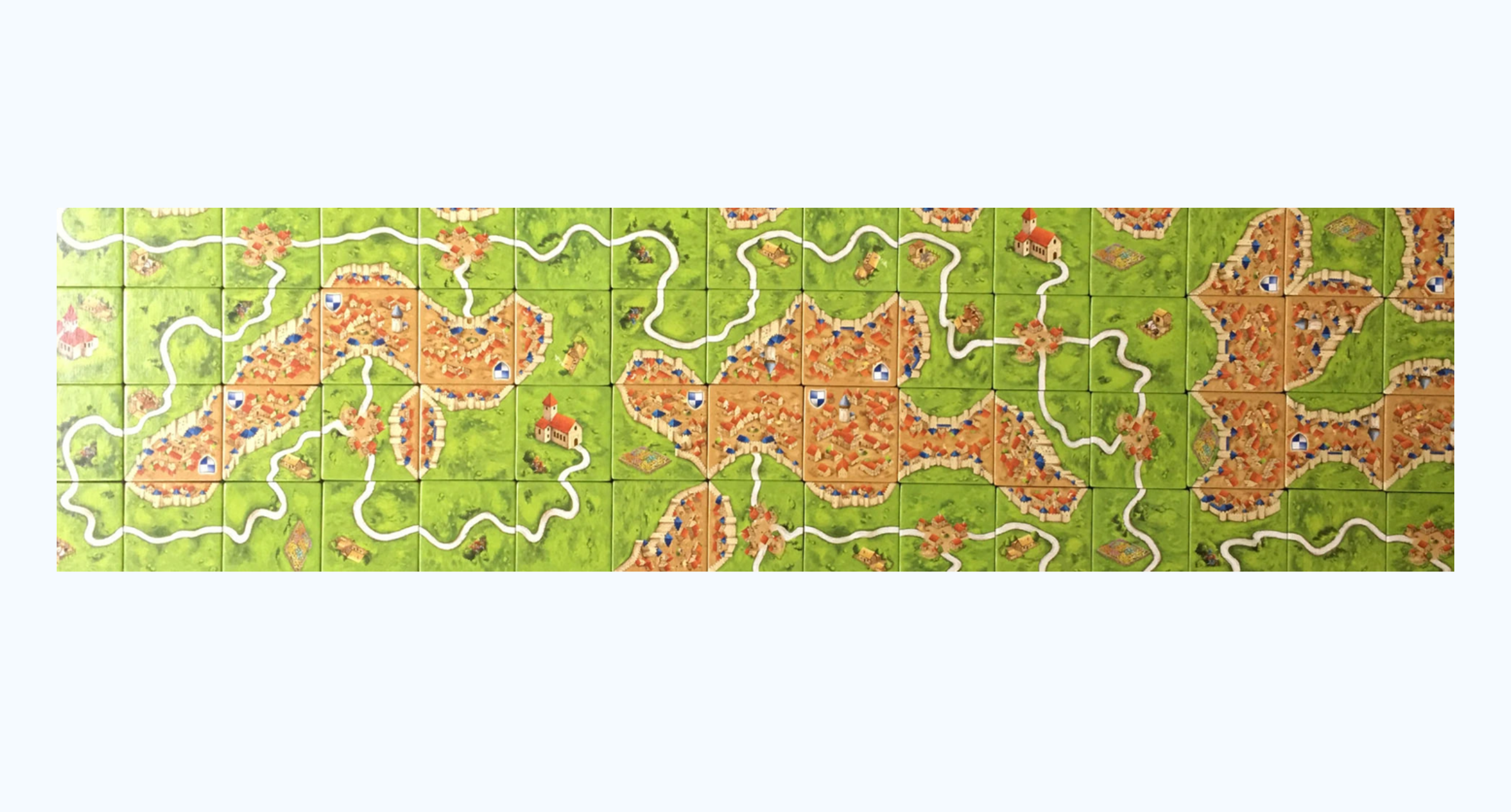Pre Drawing Pieces in Board Games
If you have ever played a game where each player draws pieces randomly from a bag each turn, you may relate to this post. For me, this game is Carcassonne. The game progresses by players drawing tiles randomly from a bag and playing them on the table.
flowchart LR
A --> B --> C
After playing this game enough times, there is always a temptation to “pre-draw” the pieces to speed up the game.
What do I mean by pre-drawing exactly? Say player A has drawn a piece and is now taking time to play the piece on the board. Normally, Player B & C are patiently waiting for A to play their piece so that Player B and then Player C can draw. Pre-drawing would instead allow C to draw (but not play the piece) immediately after A has drawn (while A is still deciding where to play) but before B has had a chance to draw.
flowchart LR
A --> C --> B
Depending on the group you play with, this is either allowed or not allowed since pre-drawing can “change the odds”. Here is some math that shows that it actually doesn’t change the odds:
First, the easy case where we do not pre-draw. The chances of you drawing a particular type of tile (lets call it $x$) would be:
\[P(e) = \frac{n}{N}\]So that there are $n$ remaining tiles of type $x$ out of $N$ total tiles before your turn. Now, let’s say someone pre-drew before your turn (You weren’t fast enough to slap their hand while they did it 😜). During this pre-draw, either $e$ or $e’$ happened for the person who pre-drew and now you are left with event $\tilde e$ representing your draw success of type $x$ after the pre-draw:
\[\begin{flalign*} P(\tilde e) &= P(\tilde e \cap e) + P(\tilde e \cap e') \\ &= P(\tilde e | e)P(e) + P(\tilde e | e')P(e') \\ P(\tilde e | e) &= \frac{n - 1}{N - 1} \\ P(\tilde e | e') &= \frac{n}{N - 1} \\ P(e') &= \frac{N - n}{N} \\ \therefore P(\tilde e) &= \frac{n - 1}{N - 1}\frac{n}{N} + \frac{n}{n-1}\frac{N - n}{N} \\ &= \frac{n}{N}[\frac{n - 1}{N - 1} + \frac{N - n}{N - 1}] \\ &= \frac{n}{N} \\ &= P(e) \end{flalign*}\]Where the first line comes from the Law of Total Probability and the remainder is just counting or algebra. Since $x$ was chosen arbitrarily, this holds for any type of tile (and thus any piece).
Happy board gaming!
